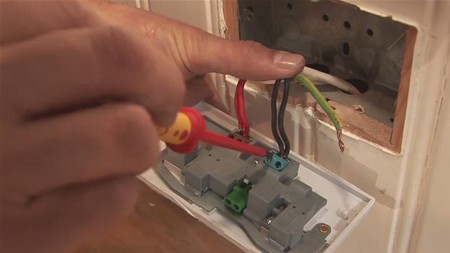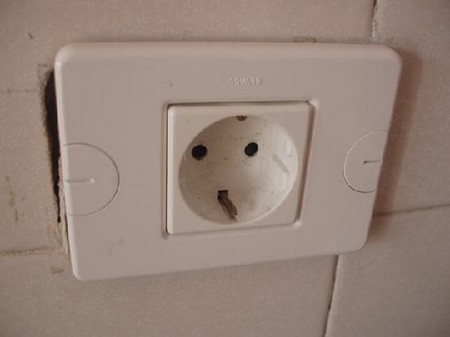My first house was terribly dilapidated and contained only six single power points throughout. The whole electricity supply was ancient and needed to be completely renewed. Anxious as I was to get the job done, I installed lots of power points, mostly on one side of the house, but these were badly planned. They ended up being positioned in all the wrong places. It’s lucky I have eyes in the back of my head so that I could watch the telly!
Before you start, it’s a good idea to plan where you think your furniture and appliances are going to be located around the room in question so that you can ensure that the power points are installed within easy reach. You may find (like I did), that you need to move the socket from behind the sofa, or you want an extra power point without having to use an extension cable; We explain how you can do these things with minimum fuss. Single power points are not much cheaper than doubles, so when fixing a new socket you might just as well fix a double.
The power supply is simply a continuous cable loop of 2.5mm twin and earth (three cores; two sheathed – live and neutral, one unsheathed – earth), pulled through where the power points are located, then looped on to the next point and so on. This is called a ring main. There is one on each floor of a house for power and a separate ring for lighting.
Changing from a Single to a Double Power Point
Turn OFF the power from the mains. Unscrew the retaining screws on the single socket face and pull the face out to reveal the cables. Unscrew the wires and remove the socket face. Disconnect the interior of the single socket box and remove the back box by hand.
If the power point is mounted in a plasterboard partition wall, mark the outline of the box on to the wall with a pencil and, using a padsaw, cut out the piece of plasterboard. Fix the new plasterboard back box, pulling the cables through to the front of the box. The wiring will be the same for a single or double socket outlets – two red wires (live), two black (neutral) and two green and yellow (earth). Connect up the wires accordingly, replace the double socket cover and secure the screws.
If the power point is mounted in a solid wall, position the new double back box and mark the wall with a pencil. Remove the existing single socket box.
Using a masonry bit and drill, create a series of holes following your pencil line to the depth of the new back box. Then, use the clubhammer and small bolster or cold chisel to break out the rest of the plaster and brickwork around the drilled holes.
Place the new double socket box in the new opening, mark two of the fixing holes. Using plugs and screws drill the holes, pull the cables through and fix the back-box in position, ensuring that it is flush with the plaster line. Finally, make good the edges of the opening around the box with filler and smooth with sandpaper.
To Add a Power Point to the Existing Ring Main
In order to add a new power point to the existing ring main, locate and fix the new power point box as described, also cutting a chase in the plaster to bury the new cable below the box, and let into the floor void.
Turn OFF the power from the mains and test the existing socket switch with an appliance before removing the socket face.
Strip back the ends of the new wires and add these to the existing wires – black to black, red to red, yellow and green – then fix the socket face back in place.
Run the new wire under the floor from the existing socket to the new socket. Strip the wire ends and fix to the new socket outlet. Make good the changes with plaster or filler and sandpaper smooth when dry.
Categories
Advertisements
Recent Articles
 How to Understand Bed Sizes – A Small Guide
How to Understand Bed Sizes – A Small Guide How to Select Some Must Have Kitchen Accessories
How to Select Some Must Have Kitchen Accessories Best Way to Change a Car Tire
Best Way to Change a Car Tire Best Way to Write an Affirmation
Best Way to Write an Affirmation Best Way to Take Charge of Your Financial Life
Best Way to Take Charge of Your Financial Life Best Way to Survive a Party When You Don’t Know Anyone
Best Way to Survive a Party When You Don’t Know Anyone Best Way to Stop Self Sabotaging Yourself
Best Way to Stop Self Sabotaging Yourself Best Way to Start Journal Writing
Best Way to Start Journal Writing Best Way to Speak with a Powerful Voice
Best Way to Speak with a Powerful Voice Best Way to Simplify Your Life
Best Way to Simplify Your Life Best Way to Respond to a Put-Down
Best Way to Respond to a Put-Down Best Way to Reduce Acne Breakouts
Best Way to Reduce Acne Breakouts Best Way to Recover from Dining Disasters
Best Way to Recover from Dining Disasters Best Way to Quit Your Job Gracefully
Best Way to Quit Your Job Gracefully Best Way to Make Your Own Website
Best Way to Make Your Own Website



Leave a Reply